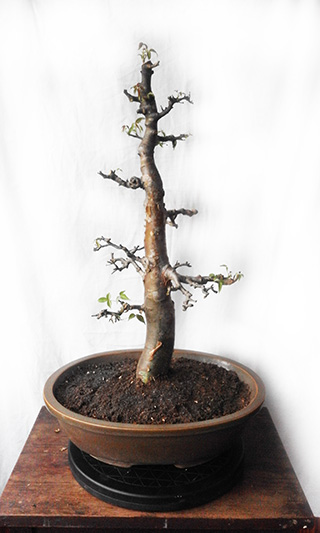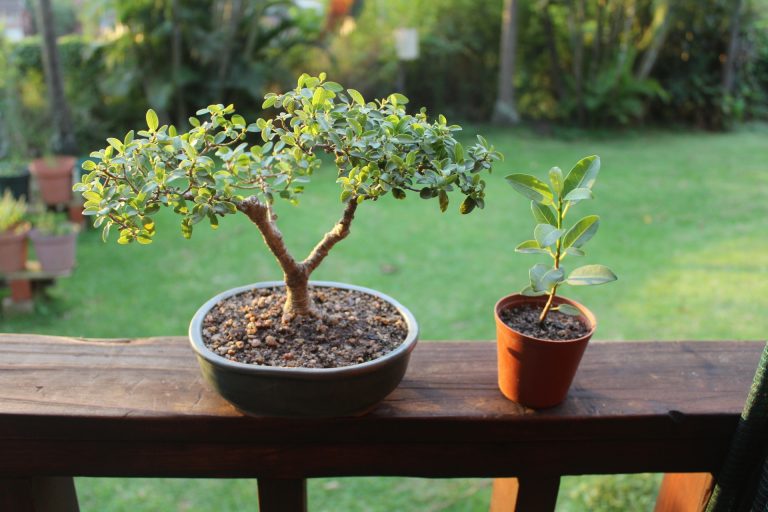Commiphora harveyi Forest Trim Down
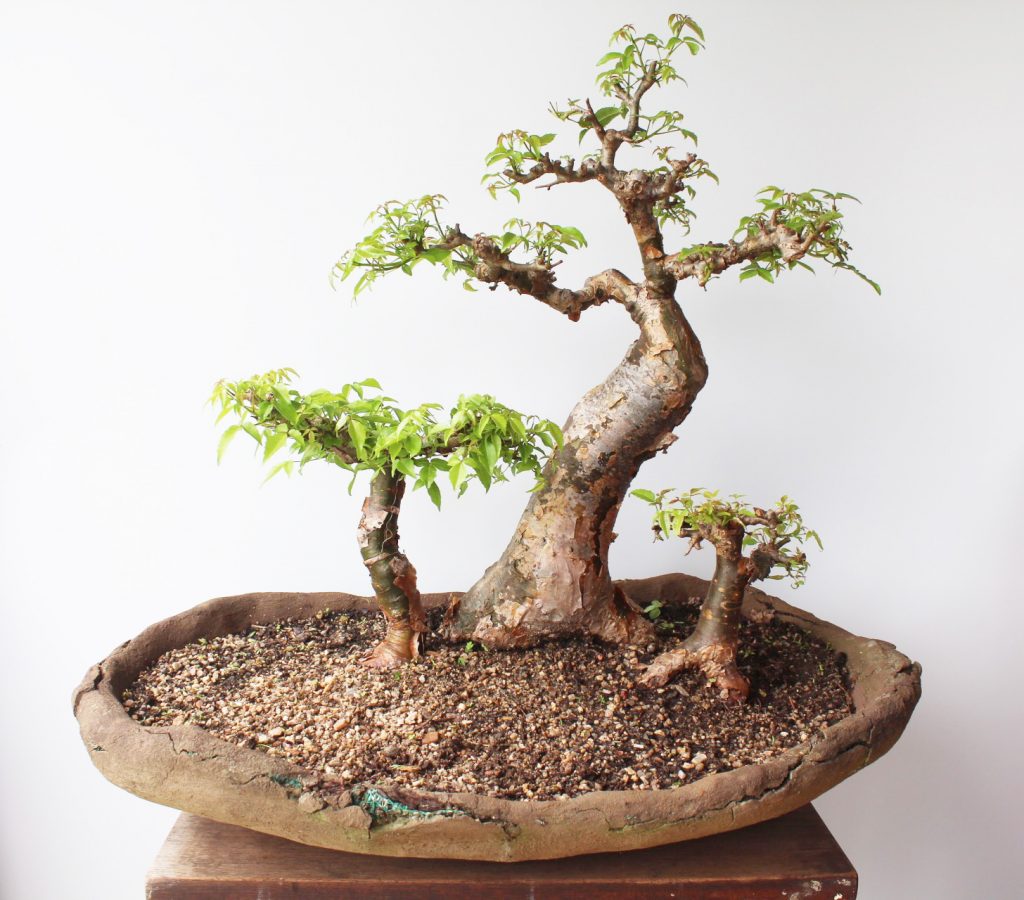
You would think that I would have found plenty of spare time during Covid 19 lockdown to work on my plants, but as things work out, I have been busier than ever. As a consequence some of my bonsai have suffered from a bit of neglect. The commiphora harveyi forest you see in the photos is one of them.
Commiphora harveyi is a very common tree in Zululand. It is found throughout our country in the wetter parts. It is often called a paper-bark, because its bark can peel off like paper. However, there are numerous tree species in this country that are called paper-bark trees so it pays to be a bit more scientific. We tend to call Commiphora harveyi Commis, and they belong to the myrrh family of plants. Commis are one of my favourite plant species for bonsai. They have no thorns, grow like crazy, and have a wonderful aroma when cut. They also develop quite thick foliage as one can see. Somewhere inside this bush of leaves and branches is a wonderful bonsai, I just have to remove the stuff that I feel is preventing me from seeing the shape and style.
Making uniquely shaped pots
First, however, a quick mention about the pot. I made this pot almost twenty years ago, and apart from needing a little bit of tlc, it is still in quite good condition. Making uniquely shaped pots with quick-drying hobby cement is great fun, and allows one to make just about any shaped pot one can imagine. The basic shape is made by bending wire into a basket of some sort. The wire basket is then wrapped with something like onion bags to provide a mesh surface. The mesh surface is then smeared with quick-drying fondue cement. Mine is showing its age a bit, and one can see the green plastic onion bag protruding from the broken bit in the front. I can fix it quite easily, though, because I made it in the first place. I intend doing an article on pot-making for a future edition.
Oh, just by the way, the black circular object that the pot is resting on is a turntable. They are sold as a rotating TV stand, but it is very handy for working with bonsai. When we work on our trees it is quite important to get an all-round view of the tree, and it is much easier to turn it around on the turntable than to actually walk around it. It is not an essential bonsai tool, but it is a very nice luxury item that does not cost very much.
Back to tending the trees inside the pot.


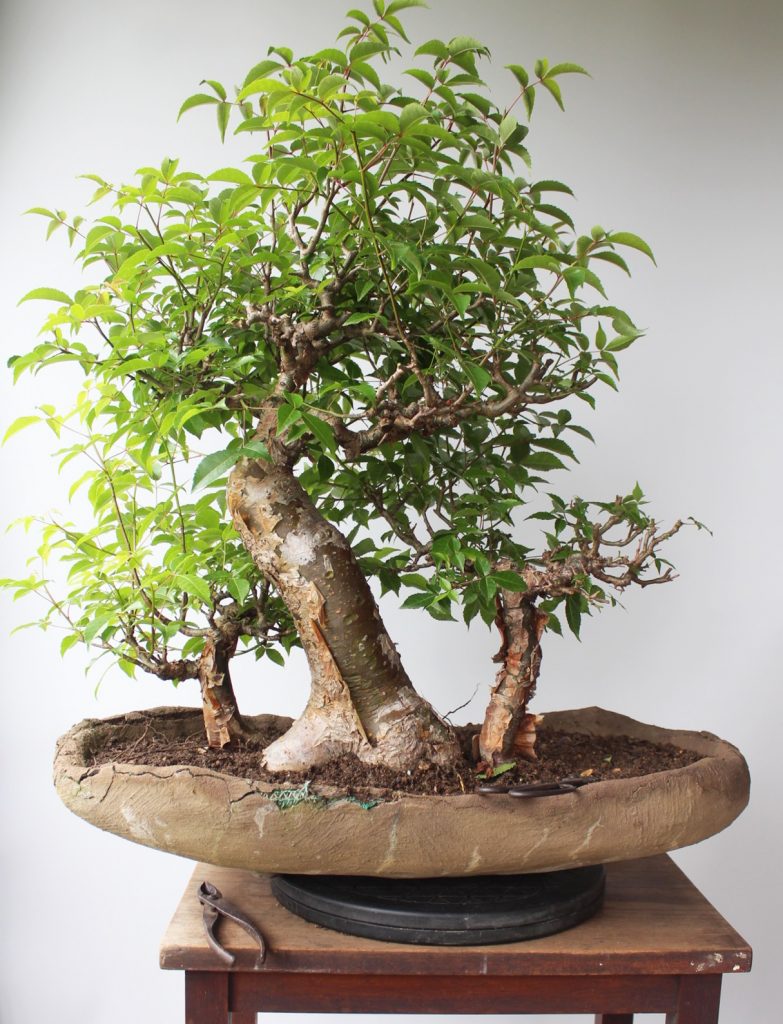

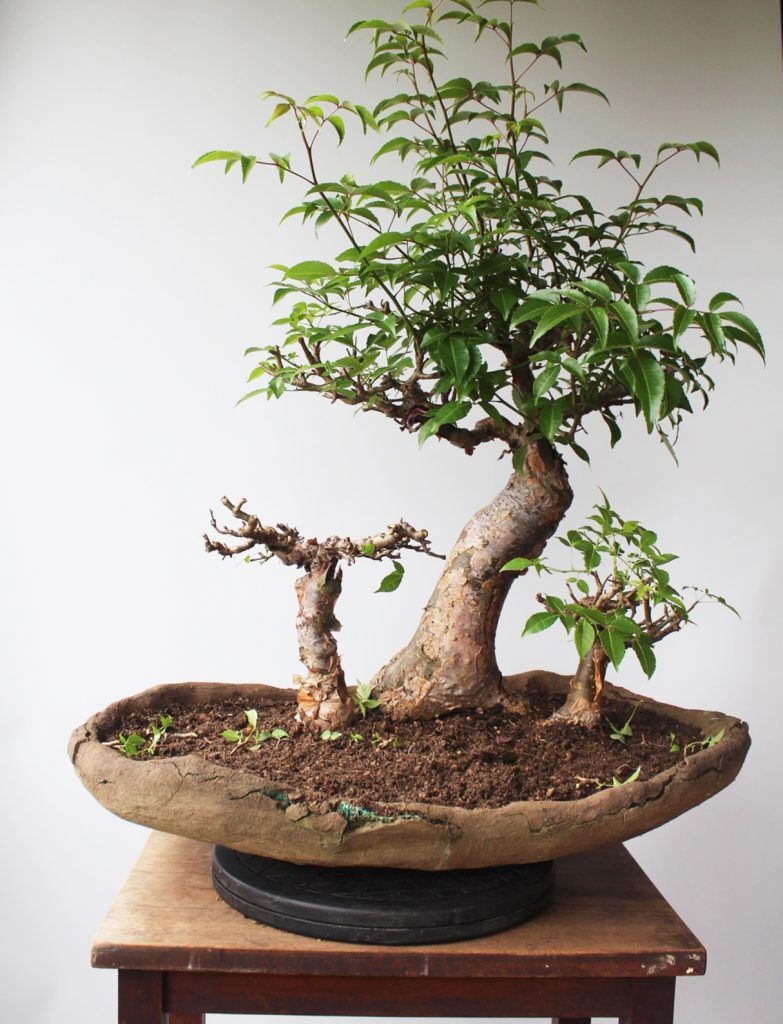
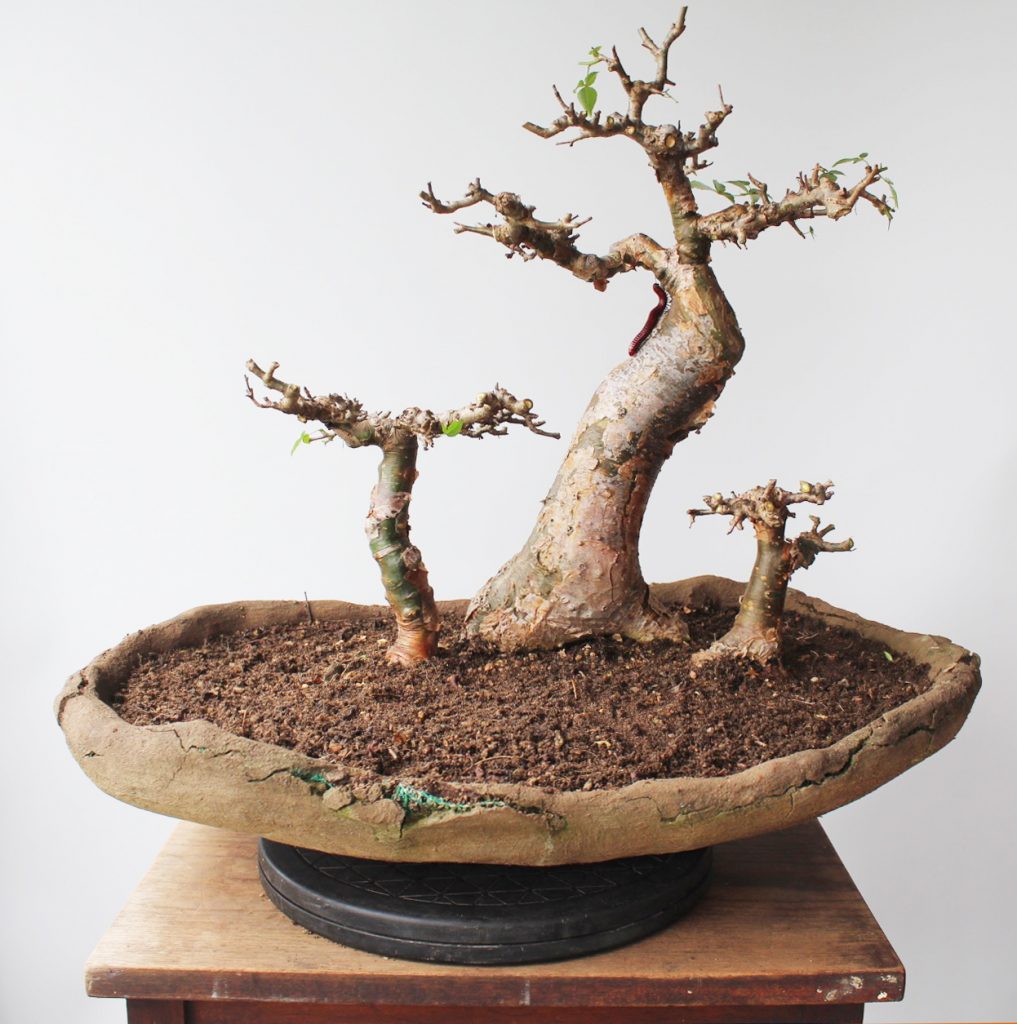
The most obvious place to begin was to clean up the soil by removing the weeds. I then began removing the long leggy shoots beginning at the bottom of each tree. When faced with such an overgrown plant there are a lot of branches that are very clearly too long. Begin by removing the ones that are most obviously “incorrect”. After the obvious bits have been removed one can make styling decisions more easily.
I have been working these three trees for about twenty years, but they have not always been planted as a group. Every few years I give them a good cut back, removing many of the small branches that had grown over the past few years. Every time I cut them back I seem to cut more branches off, but the trees just seem to flourish even more. After so many years their basic style has become well established, so they don’t need major styling, just a serious hair cut. I established the main branches many years ago, but after a few years many new branches have grown in places where I would prefer them not to be. The cut-back has re-establish the main branches. Slowly, over the years, they/it is developing into a very pleasing group planting.
The composition.
The composition of the three trees is actually a bit quirky. In theory, the two smaller trees should be swopped around. The larger of the two, on the viewer’s left should be on the other side, because that would, in theory, be the most prominent side branch. However, the graceful curve of main tree creates a convenient frame for the smaller tree. The middle-sized tree’s canopy creates a very nice “side branch” on the left. I think the arrangement works well. It is important to remember that the principles of design are there to guide us, but not to restrict us.
Also, the silhouettes of forests and group plantings should be styled as if they were single trees, which is why the tree on the left does not look out of place. I am the only person who looks at this tree. If it looks ok to me then it IS ok, regardless of whether it conforms to certain composition principles or not.
For more inspiration visit Bill Valavanis‘ bonsai blog.

